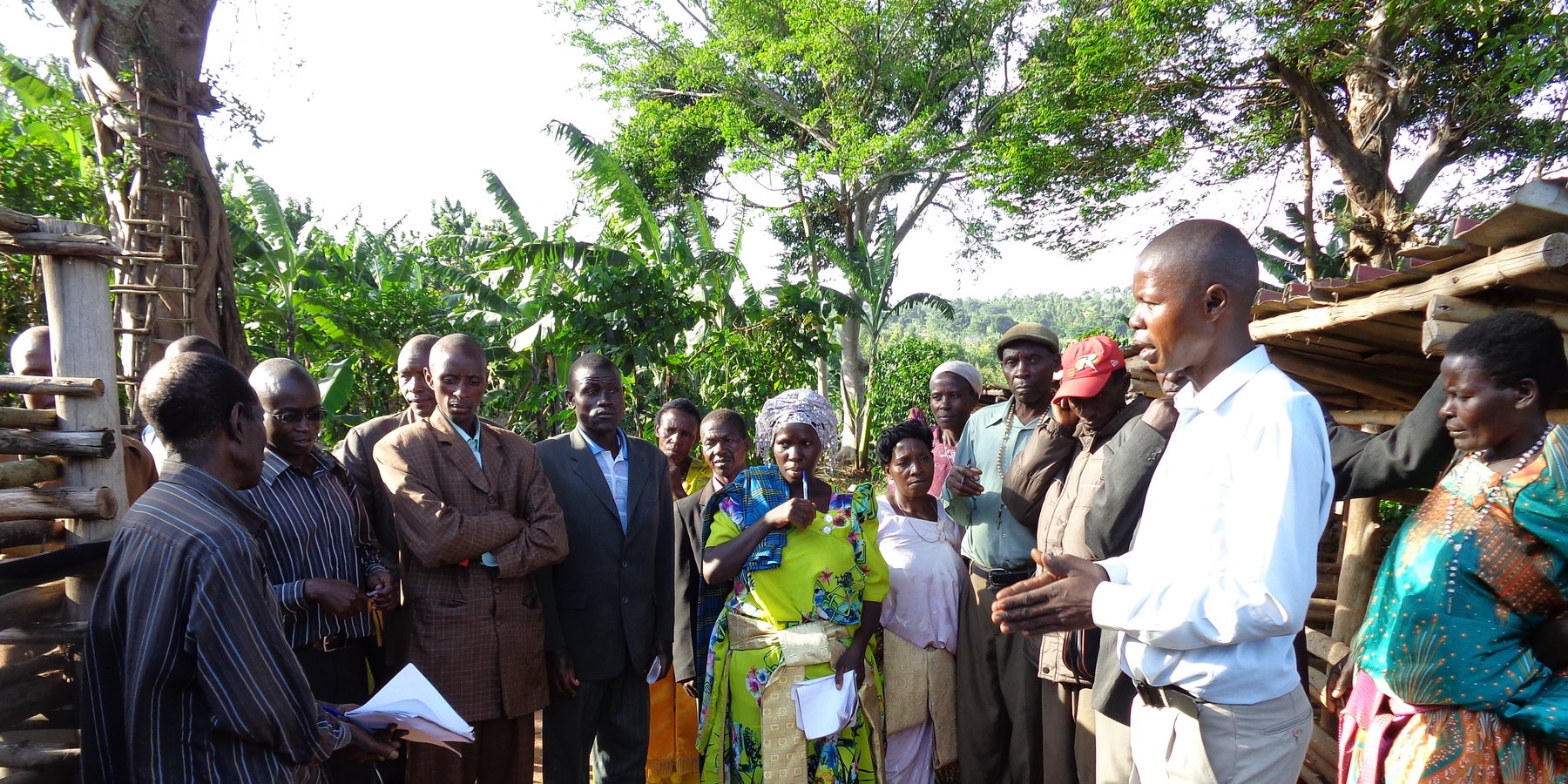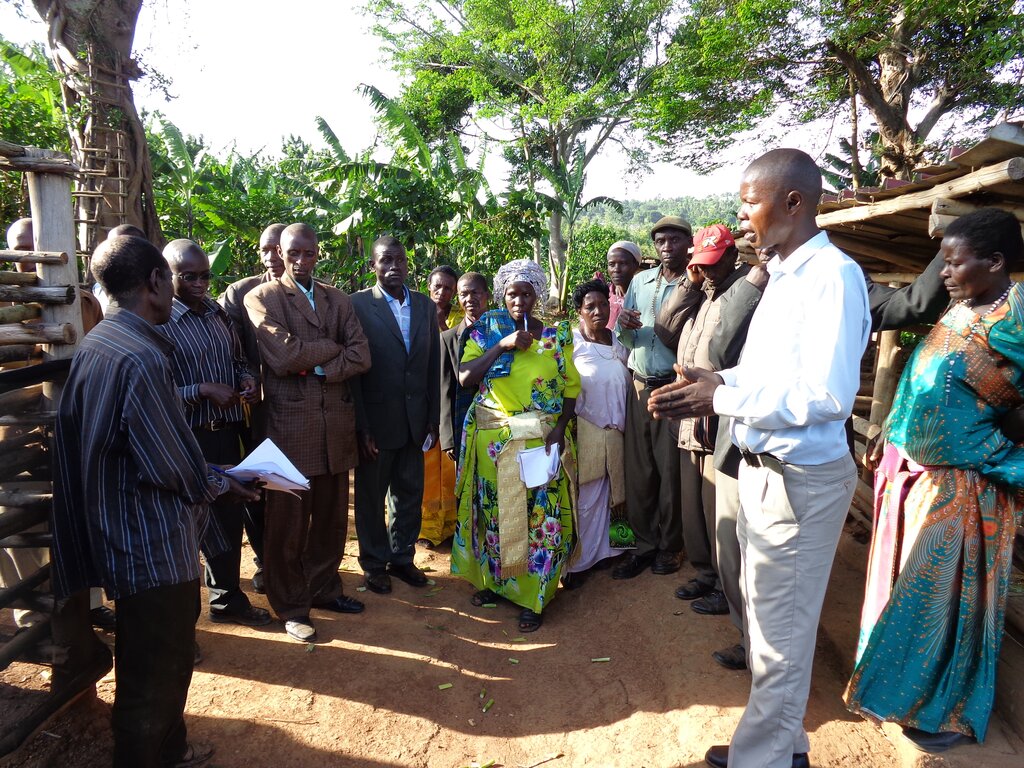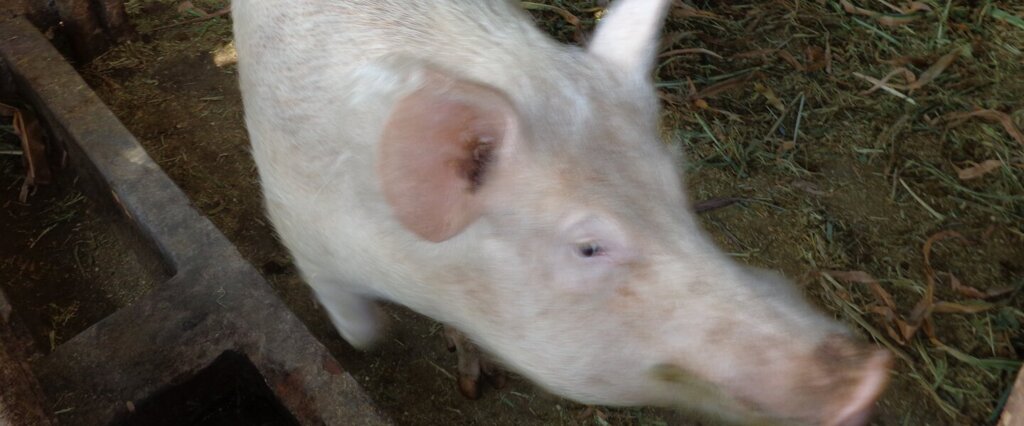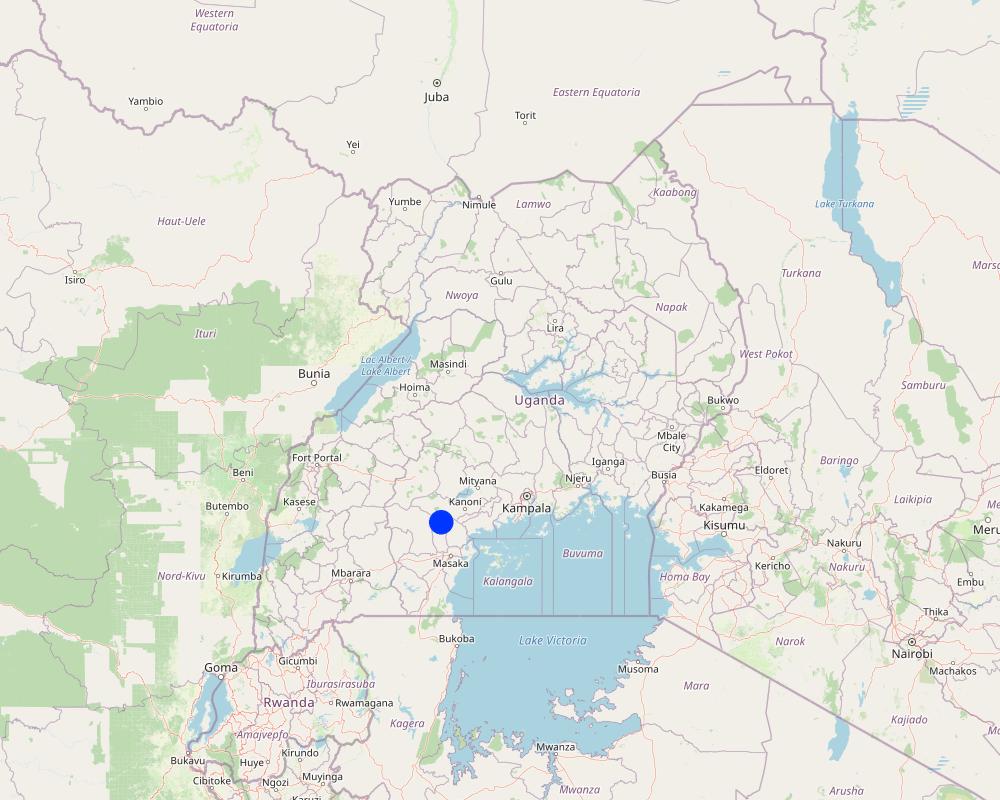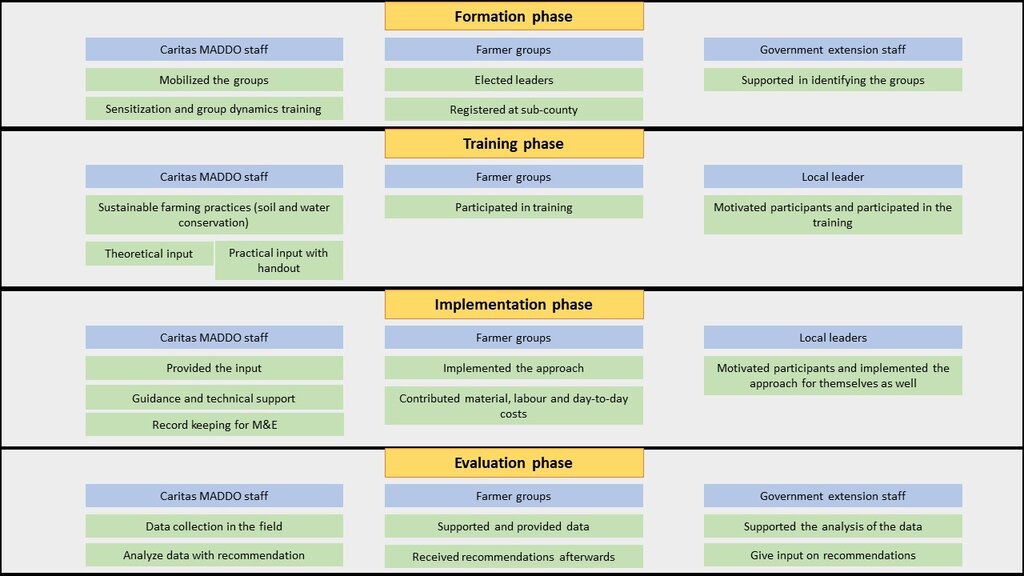MADDO SLM approach [Uganda]
- Creación:
- Actualización:
- Compilador: Tonny Kyambadde
- Editores: Beatrice Nabukenya, Michael Mulindwa, Kyagaba Prossy, Annika Reimann
- Revisores: William Critchley, Rima Mekdaschi Studer
obugimu bwettaka ngokozesa obusa bwembizzi mu mwannyi ne bitooke
approaches_6370 - Uganda
Visualizar secciones
Expandir todo Colapsar todos1. Información general
1.2 Detalles de contacto de las personas de referencia e instituciones involucradas en la evaluación y la documentación del Enfoque
Nombre del proyecto que facilitó la documentación/ evaluación del Enfoque (si fuera relevante)
Euregio-East Africa Livelihood Improvement Programme (EEALIP)Nombre de la(s) institución(es) que facilitaron la documentación/ evaluación del Enfoque si fuera relevante)
Caritas Masaka Diocesan Development Organisation (Caritas MADDO) - Uganda1.3 Condiciones referidas al uso de datos documentados mediante WOCAT
¿Cuándo se compilaron los datos (en el campo)?
14/07/2021
El compilador y la/s persona(s) de referencia claves aceptan las condiciones acerca del uso de los datos documentados mediante WOCAT :
Sí
1.4 Referencia/s al/los Cuestionario(s) de Tecnologías MST
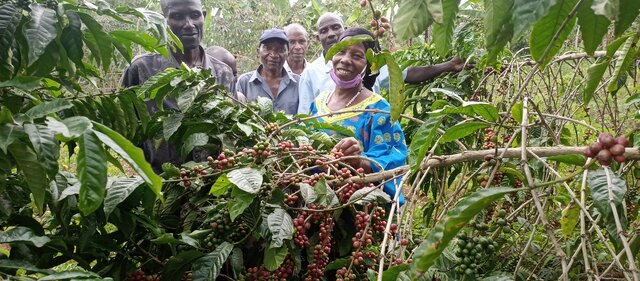
Piggery-Banana-Coffee technology [Uganda]
The "Piggery-Banana-Coffee" sustainable land management technology is a proven practice that significantly improves soil fertility and productivity in an integrated farming system for smallholder farmers in Uganda.
- Compilador: Tonny Kyambadde
2. Descripción del Enfoque MST
2.1 Breve descripción del Enfoque
This integrated soil fertility management approach aims at identifying and promoting practices in land management that can increase soil fertility, reduce land degradation and improve production. Under this specific example, organic manure from a piggery was applied to banana and coffee plantations.
2.2 Descripción detallada del Enfoque MST
Descripción detallada del Enfoque MST:
The main objective of the MADDO approach is to test and promote, in a pilot area, the advantages for small-scale farmers of organic manure from piggeries in coffee and banana plantations. The approach aims not only to increase farmers' production through multiple income streams from the integrated production systems but also to secure those income streams by enhancing soil fertility and decreasing land degradation for long-term sustainability. One distinct feature of the approach is the emphasis on cost-effective technologies for small-scale farmers. In the case of the piggery-banana-coffee enterprise, the investment capital needed is very low and the technology is not complicated.
The focus was on small-scale farmer groups of 30-35 members (roughly 200 farmers in 6 groups participated) and was coordinated by Caritas MADDO (one project coordinator and three field staff officers) and agriculture officers from the subcounty level. Groups were identified and implementation concentrated on various trainings for farmers on piggery management, banana and coffee production. In particular, the production of organic manure was highlighted in training, with emphasis on collection, storage and application. After basic training, farmers are led through the one-year production cycle which includes the following stages: rearing of the pigs; manure collection; storage in a pit for decomposition (one to two months); application of the manure during the rainy season when the plants are healthy and actively growing; and then ongoing monitoring, and if needed repetition of the stages and reapplication of the manure (two times per year).
The small-scale farmers appreciate the technology because of the higher production and income they are gaining. It is easy and cheap - particularly because the enterprise can be spread by beneficiary farmers passing on piglets to new farmers. Nevertheless, there is the possibility of the pigs catching diseases (African swine fever) and once infected the farmers have no options for relief as an entire piggery can be wiped out. Moreover, farmers have complained that water scarcity and unsuitable weather conditions can affect production.
2.3 Fotos del Enfoque
2.5 País/ región/ lugares donde el Enfoque fue aplicado
País:
Uganda
Región/ Estado/ Provincia:
Central Region
Especifique más el lugar :
Lutugunda village in Bukomansimbi district
Map
×2.6 Fechas de inicio y conclusión del Enfoque
Si no se conoce el año preciso, indique la fecha aproximada en la que se inició el Enfoque:
hace más de 50 años atrás (tradicional)
Comentarios:
The approach is based on the Piggery Banana-Coffee Sustainable Land Management technology that has been practiced for years in the project area. The Euregio project has just promoted the approach and technology recently again.
2.7 Tipo de Enfoque
- iniciativa local reciente/ innovadora
2.8 Propósitos/ objetivos principales del Enfoque
The main objective of the approach from an organizational perspective was to test in a pilot area the advantages of organic manure from piggery in a coffee and banana plantation. The approach aims not only to increase farmers' production through multiple income streams from piggery, banana and coffee but also to secure those income streams by enhancing the soil fertility and decreasing land degradation for long-term sustainability.
2.9 Condiciones que facilitan o impiden la implementación de la/s Tecnología/s aplicadas bajo el Enfoque
normas y valores sociales/ culturales/ religiosos
- facilitan
Piggeries are common among the groups
disponibilidad/ acceso a recursos y servicios financieros
- facilitan
Input supply was provided
entorno institucional
- facilitan
With the presence of the extension officers from the government and other NGOs in the area
colaboración/ coordinación de actores
- facilitan
Collaboration was part of the overall project design
marco de trabajo legal (tenencia de tierra, derechos de uso de tierra y agua)
- facilitan
only customary rights practices, but no conflicts
políticas
- facilitan
gobernanza de tierras (toma de decisiones, implementación y aplicación)
- facilitan
conocimiento de MST, acceso a apoyo técnico
- facilitan
mercados (para comprar insumos, vender productos) y precios
- facilitan
In particular piggery has a high market in the area
carga de trabajo, disponibilidad de mano de obra
- facilitan
3. Participación y roles de las partes interesadas involucradas
3.1 Partes interesadas involucradas en el Enfoque y sus roles
- usuarios locales de tierras/ comunidades locales
Stakeholders centered around the small-scale farmers (one group of 30-35 members)
- organizaciones comunitarias
Caritas MADDO
- especialistas MST/consejeros agrícolas
Agriculture extension officers from subcounty
- ONG
Caritas MADDO
- gobierno local
3.2 Involucramiento de los usuarios locales de tierras/ comunidades locales en las distintas fases del Enfoque
| Involucramiento de los usuarios locales de tierras/ comunidades locales | Especifique quién se involucró y describa las actividades | |
|---|---|---|
| iniciación/ motivación | interactivo | The project team involved the community leaders and farmers from prior project phases as well as governmental extension officers have been involved in the initiation of the approach. Activities encompasses the joint group formation and mobilization of fellow farmers to discuss the training needs and capacities. |
| planificación | interactivo | The above people then continued with jointly discuss the modus operantes with creating a training schedule and actively participating in the learning journey. |
| implementación | auto-movilización | The implementation mainly encompasses the adoption of the SLM technology, and the farmers were the main implementors and actors with offering pilot land and labor. The project contributed advisory support, monitoring and financial support. |
| monitoreo y evaluación | interactivo | M&E was done by the project staff, extension officers and the farmers together with the community leaders themselves on a regular basis. |
3.3 Flujograma (si estuviera disponible)
3.4 La toma de decisiones en la selección de Tecnología(s) MST
Especifique quién decidió la selección de las Tecnología/ Tecnologías a implementarse:
- principalmente usuarios de tierras con el apoyo de especialistas MST
Explique:
Mainly land users, supported by implementing organization
Especifique las bases que sustentaron la toma de decisiones:
- la experiencia personal y opiniones (no documentadas)
4. Apoyo técnico, fortalecimiento institucional y gestión del conocimiento
4.1 Construcción de capacidades / capacitación
¿Se proporcionó la capacitación a usuarios de tierras/ otras partes interesadas?
Sí
Especifique quién fue capacitado:
- usuarios de tierras
- personal de campo/ consejeros
Forma de capacitación:
- en el contexto de trabajo
- de agricultor a agricultor
Temas avanzados:
Land and soil management
Sustainable agricultural practices
Piggery management
4.2 Servicio de asesoría
¿Los usuarios de tierras tienen acceso a un servicio de asesoría?
Sí
Especifique si servicio proporcionado se realizó:
- en los campos de los usuarios de tierras
4.3 Fortalecimiento institucional (desarrollo institucional)
¿Se establecieron o fortalecieron instituciones mediante el Enfoque?
- sí, un poco
Especifique el nivel o los niveles en los que se fortalecieron o establecieron las instituciones:
- local
Especifique el tipo de apoyo:
- construcción de capacidades/ entrenamiento
Proporcione detalles adicionales:
Input support
4.4 Monitoreo y evaluación
¿El monitoreo y la evaluación forman parte del Enfoque?
Sí
Si respondió que sí, ¿la documentación se utilizará para monitoreo y evaluación?
Sí
4.5 Investigación
¿La investigación formó parte del Enfoque?
Sí
Especifique los temas:
- ecología
Proporcione detalles adicionales e indique quién hizo la investigación:
Project staff was during minor research on soil improvement and in particular on fitting livestock integrations. Due to this research pigs were chosen as preferred livestock.
5. Financiamiento y apoyo material externo
5.1 Presupuesto anual para el componente MST del Enfoque
Indique el presupuesto anual para el componente del MST del Enfoque (en US$):
50000,00
Si no se conoce el presupuesto anual preciso, indique el rango:
- 10,000-100,000
Comentarios (ej. fuentes principales de financiamiento/ donantes principales):
The budget includes staff salary, transport, training costs and inputs for the farmers. In total the approach reached around 200 farmers within six groups in Bukomansimbi (30-35 participants each).
5.2 Apoyo financiero/material proporcionado a los usuarios de tierras
¿Los usuarios de tierras recibieron financiamiento/ apoyo material para implementar la Tecnología/ Tecnologías? :
Sí
Si respondió sí, especifique el tipo o los tipos de apoyo, condiciones y proveedor(es) :
Land users were given input support (coffee seedlings, banana suckers, pigs)
5.3 Subsidios para insumos específicos (incluyendo mano de obra)
- ninguno
- agrícola
| Especifique qué insumos se subsidiaron | En qué grado | Especifique los subsidios |
|---|
Si la mano de obra de usuarios de tierras fue un insumo sustancial, ¿fue:
- voluntario?
5.4 Crédito
¿Se proporcionó crédito bajo el Enfoque para actividades MST?
No
5.5 Otros incentivos o instrumentos
¿Se usaron otros incentivos o instrumentos para promover la implementación de Tecnologías MST?
No
6. Análisis de impacto y comentarios de conclusión
6.1 Impactos del Enfoque
¿El Enfoque empoderó a los usuarios locales de tierras, mejoró el involucramiento de las partes interesadas?
- No
- Sí, un poco
- Sí, moderadamente
- Sí, mucho
Technical knowledge of improved management was testified by local land users and group cohesion was strengthened through community labor pooling.
The piloting of the approach lead to evidence decision-making in the form that farmers know about the advantage of the organic manure in increasing soil fertility and increased production.
Agriculture extension officer
In particular women were part of the test group (80 %)
7 farmers were youth (under 30 years) in the group
Training on hygiene of the piggery was given. Moreover, farmers mobilized for underground water tanks (positive side effect of the approach)
Prevents soil degradation
6.2 Motivación principal del usuario de la tierra para implementar MST
- producción incrementada
A pulling factor was the fast economic benefit and food security for the participants.
- incremento de la renta(bilidad), proporción mejorada de costo-beneficio
Income was increased through the multiple income streams.
- pagos/ subsidios
The Euregio project was contributing inputs required for the technology.
- conocimiento y capacidades mejorados de MST
Curiosity and eagerness to learn about the approach and technology.
6.3 Sostenibilidad de las actividades del Enfoque
¿Pueden los usuarios de tierras sostener lo que se implementó mediante el Enfoque (sin apoyo externo)?
- sí
Si respondió que sí, describa cómo:
With the pass on mechanisms of the pigs and the capacity building through the extension officers. The pass on mechanisms works similar to the Heifer pass on, where participating farmers have to contribute their newborn piglets to other members within the group that have not benefited from the prior project input.
6.4 Fortalezas/ ventajas del Enfoque
| Fuerzas/ ventajas/ oportunidades desde la perspectiva del usuario de la tierra |
|---|
| The pilot small-scale farmers appreciate the approach because of the higher production and income there are gaining. The approach is easy and cheap to be implemented and in particular because a pass-on mechanisms of the pigs were applied. |
| Fuerzas/ ventajas/ oportunidades desde la perspectiva del compilador o de otra persona de referencia clave |
|---|
| Advantages was in the participatory approach, and it was an interactive learning experience |
6.5 Debilidades/ desventajas del Enfoque y formas de sobreponerse a ellos
| Debilidades/ desventajas/ riesgos desde la perspectiva del usuario de la tierra | ¿Cómo sobreponerse a ellas? |
|---|---|
| The approach is unfortunately affected by the possibility of the pigs catching diseases (African swine fever) and once infected the farmers have no options for relief as entire piggery will be wiped out. | Hygiene training was given and practiced |
| Moreover, farmers have complained that water scarcity and unsuitable weather conditions have affected the approach. | Farmers mobilized for underground water tanks |
| Debilidades/ desventajas/ riesgos desde la perspectiva del compilador o de otra persona de referencia clave | ¿Cómo sobreponerse a ellas? |
|---|---|
| For the compilers it was difficult to access some of the Information from farmers (e.g., basic records on feeding or construction) | Training was given and also information was collected together with farmers (e.g. calculation made together on construction costs) |
7. Referencias y vínculos
7.1 Métodos/ fuentes de información
- visitas de campo, encuestas de campo
Roughly 20 field visits have been conducted (without trainings) to the participating groups.
- entrevistas con usuarios de tierras
Interviews have been done on group level and individually. Mainly the participating farmers, community leaders and extension officers have been interviewed by the project staff to gain data and to validate information.
- compilación de informes y otra documentación existente
Sustainable Agricultural Practice trainings and manual (from Caritas MADDO) and literature used for the technology
7.2 Referencias a publicaciones disponibles
Título, autor, año, ISBN:
Not used
7.3 Vínculos a la información relevante disponible en línea
Título/ descripción:
Not used
Vínculos y módulos
Expandir todo Colapsar todosVínculos

Piggery-Banana-Coffee technology [Uganda]
The "Piggery-Banana-Coffee" sustainable land management technology is a proven practice that significantly improves soil fertility and productivity in an integrated farming system for smallholder farmers in Uganda.
- Compilador: Tonny Kyambadde
Módulos
No se hallaron módulos


